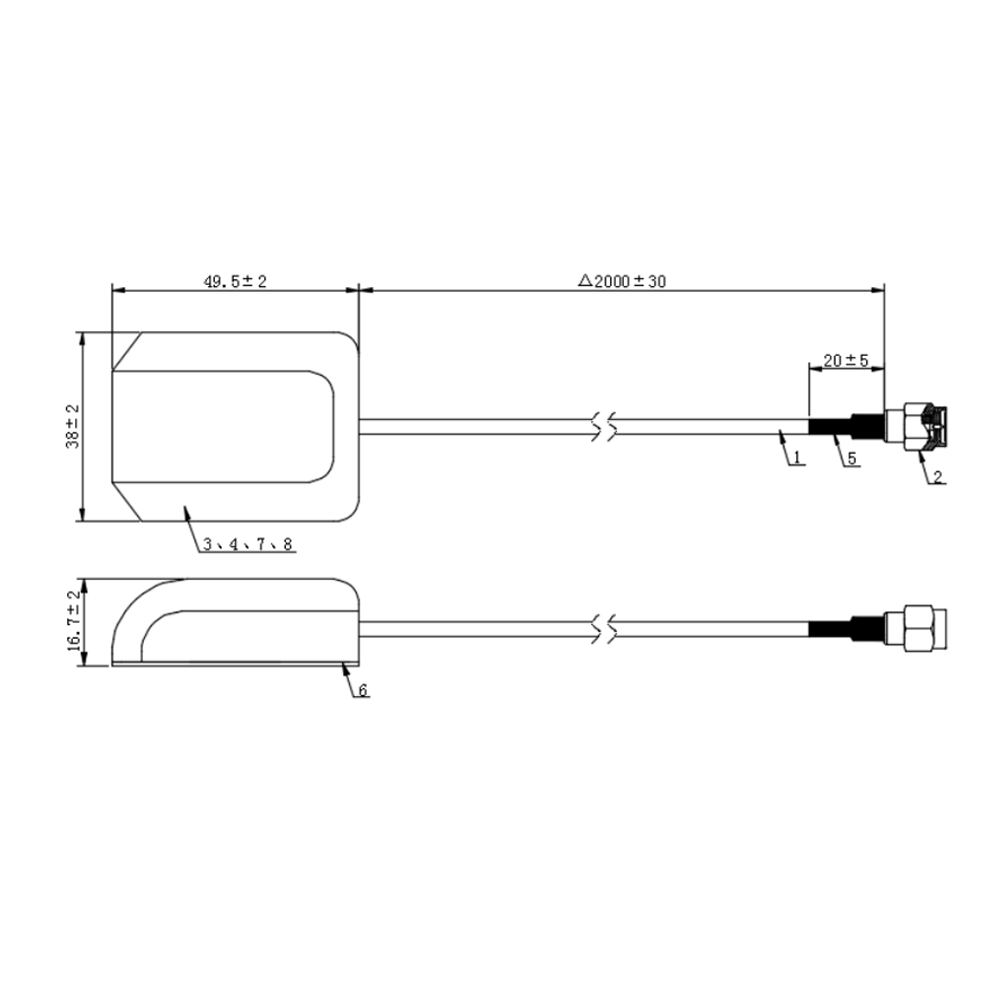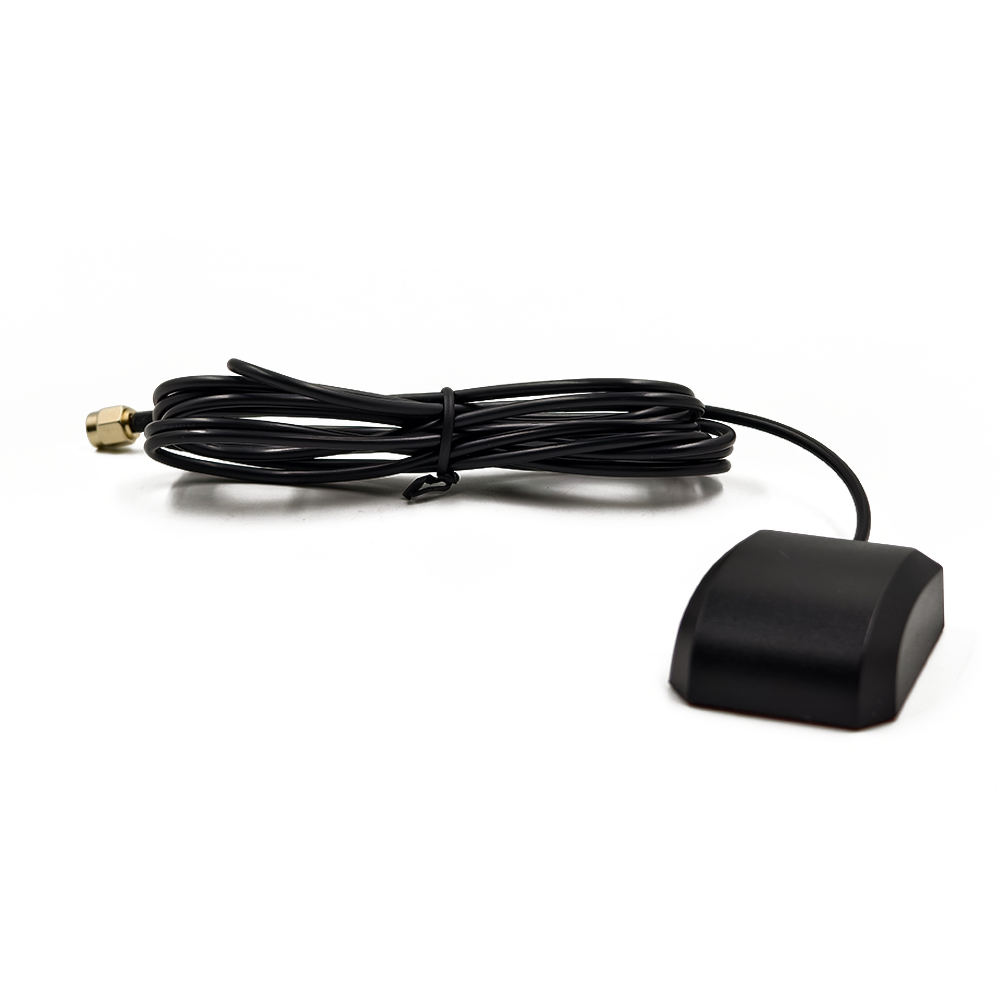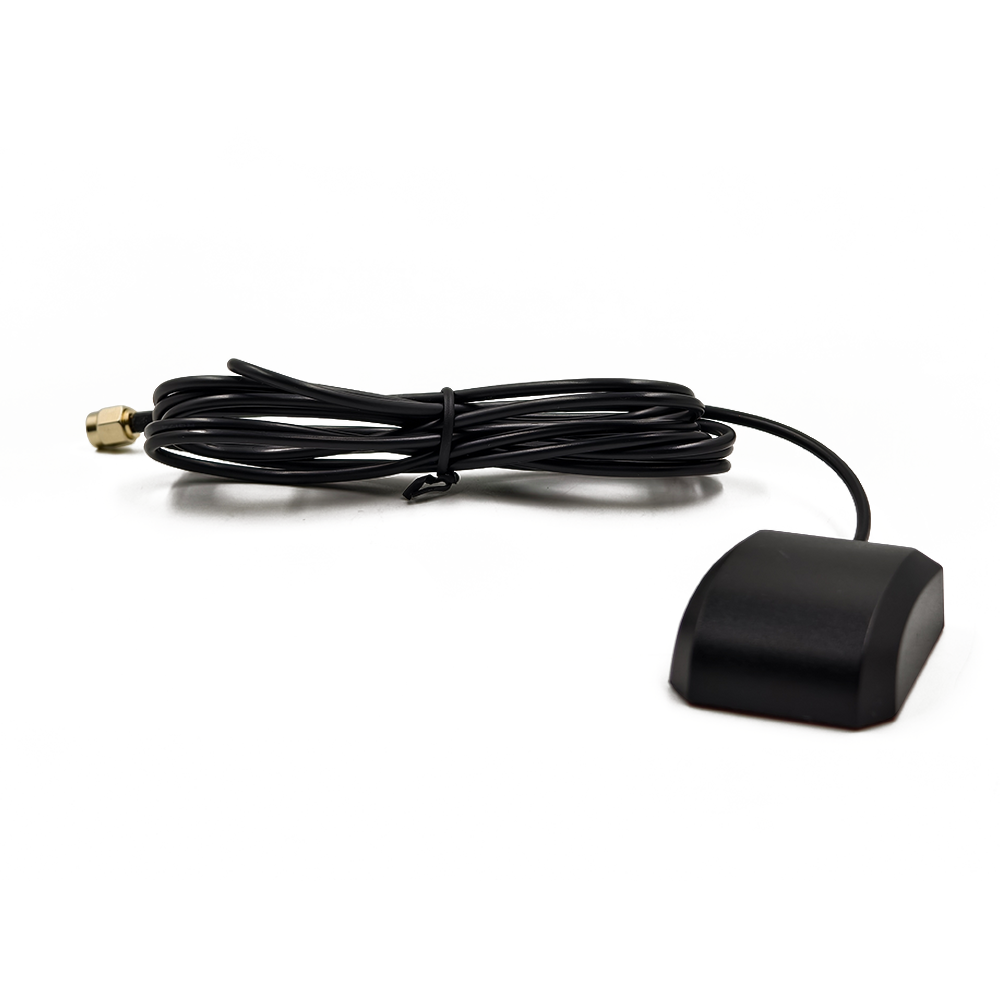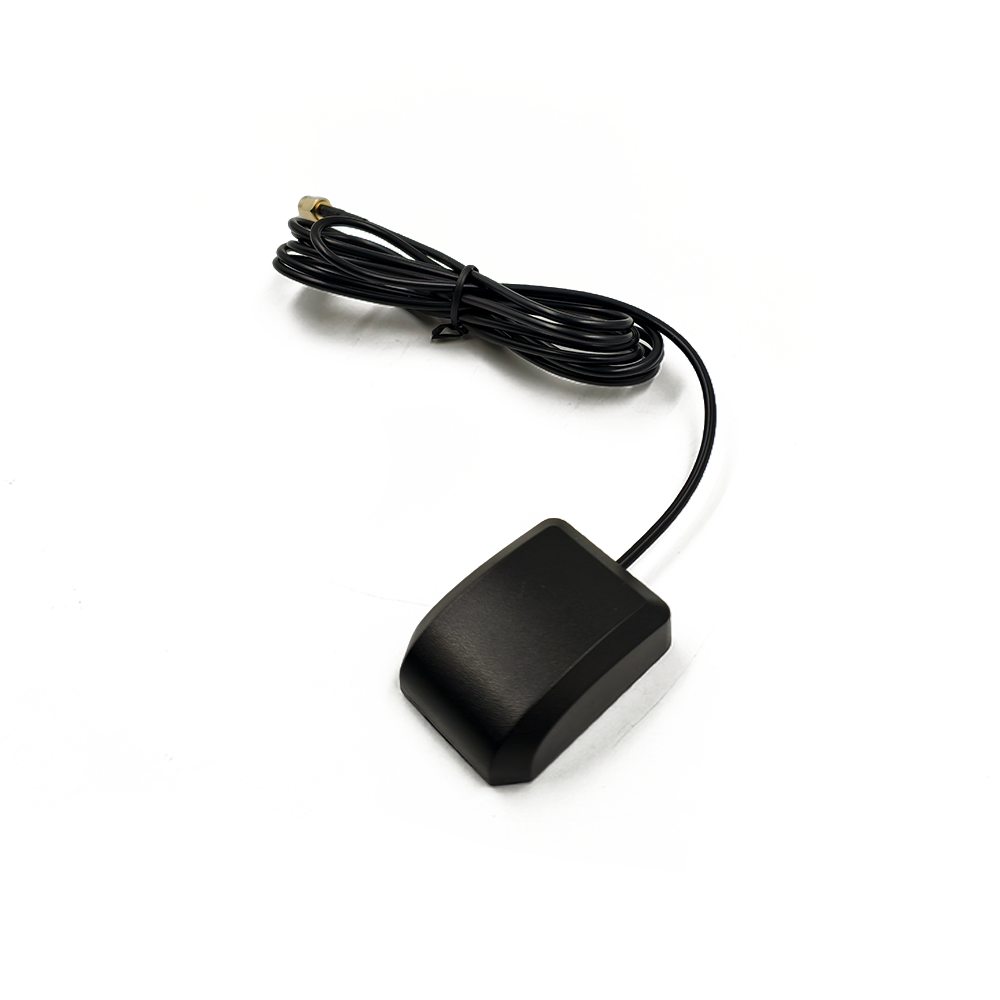At the core of the External Iridium Antenna’s functionality is its optimized performance within the 1616-1626 MHz frequency range, the band for Iridium satellite communications. This narrow frequency window is carefully allocated to minimize interference from other satellite systems and terrestrial radio services, ensuring clear, secure communication. The Iridium network relies on LEO satellites, which orbit approximately 780 kilometers above Earth, requiring antennas that can track fast-moving targets with precision. The antenna’s design—tuned specifically to this band—maximizes signal capture from these low-orbiting satellites, which appear to move across the sky rather than remaining geostationary. This frequency focus is critical because even minor deviations from the 1616-1626 MHz range can lead to significant signal loss, as the Iridium satellites transmit and receive within this tightly controlled spectrum. By prioritizing this band, the antenna ensures that users can maintain connections during voice calls, data transmissions, or IoT sensor updates, regardless of their location on the planet.
The antenna’s connectivity via a 50-ohm coaxial cable is a foundational feature that ensures efficient signal transfer between the antenna and connected devices such as Iridium satellite phones or modems. Coaxial cables are ideal for high-frequency applications like satellite communications due to their ability to minimize signal loss and resist electromagnetic interference (EMI). The 50-ohm impedance is a standard in RF engineering, matching the impedance of most Iridium-compatible devices and ensuring maximum power transfer. This compatibility eliminates the need for impedance-matching adapters, which can introduce additional loss and complexity. The coaxial cable’s construction—typically featuring a solid copper center conductor, dielectric insulator, braided shield, and durable outer jacket—protects the signal from external noise, such as that generated by maritime equipment, automotive electronics, or industrial machinery. This shielding is particularly important in environments where EMI is prevalent, such as on ships or in remote industrial sites, ensuring that the weak signals from Iridium satellites are not drowned out by interference.
Constructed from ABS (Acrylonitrile Butadiene Styrene), the antenna’s housing combines durability with lightweight design, making it suitable for a wide range of applications. ABS is a thermoplastic polymer renowned for its impact resistance, chemical resistance, and tolerance to extreme temperatures—qualities that are essential for an external antenna exposed to the elements. Whether mounted on a ship’s deck, an off-road vehicle, or a remote weather station, the ABS housing protects the antenna’s internal components (such as the radiating element and matching network) from rain, snow, dust, and physical impacts. Unlike metal housings, which can interfere with RF signals, ABS is non-conductive, ensuring that the antenna’s radiation pattern remains unobstructed. The material’s ability to withstand temperatures from -40°C to +85°C—both in operation and storage—further underscores its suitability for extreme environments, from the Arctic tundra to desert landscapes. This ruggedness ensures that the antenna remains functional even after prolonged exposure to harsh conditions, reducing maintenance needs and ensuring uninterrupted communication.
Linear polarization is a deliberate design choice that aligns with the characteristics of Iridium satellite signals, which use linear polarization to optimize transmission efficiency. Unlike circular polarization, which is better suited for mobile applications where antenna orientation is variable, linear polarization (either vertical or horizontal) offers higher gain when the antenna and satellite are aligned. In fixed or semi-fixed applications—such as mounted on a vehicle, ship, or building—the antenna can be oriented to match the polarization of the incoming Iridium signals, maximizing signal strength. This alignment is particularly important for Iridium communications, where satellite signals are relatively weak compared to terrestrial networks due to the large distance between the satellite and the antenna. By using linear polarization, the antenna ensures that the received signal is as strong as possible, improving call quality, data throughput, and connection reliability. While linear polarization requires more careful installation to ensure proper alignment, the performance benefits make it the ideal choice for external Iridium antennas used in fixed or slow-moving applications.
The antenna’s gain of 1.1-1.29 dBi (typical) and efficiency of 36%-37% are optimized for the unique challenges of Iridium communications. Gain, measured in dBi (decibels relative to an isotropic radiator), indicates the antenna’s ability to focus signal energy in a specific direction. The moderate gain of this antenna balances coverage and directionality, allowing it to track Iridium satellites as they move across the sky without requiring complex mechanical tracking systems. This is critical because Iridium satellites orbit rapidly, with a typical pass over a fixed location lasting only 10-15 minutes. The antenna’s radiation pattern is wide enough to maintain contact with the satellite throughout its pass while providing sufficient gain to capture weak signals. Efficiency—measured as the percentage of input power converted to radiated power—at 36%-37% is reasonable for a compact external antenna, ensuring that most of the power from the connected device is used to transmit signals to the satellite. While higher efficiency is desirable, the trade-off for a compact, durable design is necessary for practical applications where size and weight are constraints.
A VSWR (Voltage Standing Wave Ratio) of 1.1-1.4 and impedance of 50 ohms are key indicators of the antenna’s ability to transfer power efficiently. VSWR measures the mismatch between the antenna and the connected cable/device, with a lower ratio indicating better matching. A VSWR of 1.1-1.4 means that over 90% of the power is transferred between the antenna and the device, with minimal reflection. This high efficiency is critical for Iridium communications, where every decibel of power counts due to the weak nature of satellite signals. The 50-ohm impedance ensures compatibility with standard Iridium devices and coaxial cables, preventing signal loss due to impedance mismatch. Together, these parameters ensure that the antenna operates at peak efficiency, maximizing the range and reliability of Iridium connections. Whether making a voice call from a remote mountain range or transmitting IoT data from a maritime buoy, the antenna’s efficient power transfer ensures that the signal reaches the satellite and is received clearly.
Versatile mounting options—adhesive or screw mount, with customization available—enhance the antenna’s suitability for diverse applications. The adhesive mount allows for quick, tool-free installation on smooth surfaces such as vehicle roofs, ship cabins, or building exteriors, making it ideal for temporary or semi-permanent setups. Screw mounting provides a more secure, permanent solution for applications where the antenna may be exposed to high winds, vibrations, or rough handling—such as on off-road vehicles, ships, or industrial equipment. Customizable mounting options accommodate unique installation requirements, such as curved surfaces or extreme angles, ensuring that the antenna can be positioned for optimal satellite visibility. Proper mounting is critical for Iridium antennas, as even a small obstruction (like a tree or building) can block the signal, disrupting communication. The flexibility to choose the best mounting method for each application ensures that the antenna is always positioned to maximize satellite visibility, whether in a remote wilderness area or a bustling port.
The antenna’s operating and storage temperature range of -40°C to +85°C ensures reliability in the most extreme environments. From the freezing temperatures of the Antarctic to the scorching heat of the Sahara, the antenna’s components—including the ABS housing, coaxial cable, and internal electronics—are designed to withstand thermal stress without degrading performance. This temperature tolerance is particularly important for automotive communication systems operating in cold climates, where batteries and electronics are prone to failure, or for maritime applications in tropical regions with high humidity and temperatures. The ability to store the antenna in the same temperature range means that it can be shipped or stored in unheated containers or exposed to direct sunlight without compromising its functionality when deployed. This ruggedness ensures that the antenna is ready for use whenever and wherever it is needed, making it a trusted companion for emergency responders and adventurers alike.
Compliance with RoHS (Restriction of Hazardous Substances) standards underscores the antenna’s commitment to environmental responsibility and safety. RoHS restricts the use of hazardous materials such as lead, mercury, and cadmium, ensuring that the antenna is safe for both users and the environment. This compliance is particularly important for applications in sensitive ecosystems—such as maritime or wilderness areas—where the risk of environmental contamination must be minimized. For industrial users and fleet operators, RoHS compliance simplifies regulatory compliance, ensuring that the antenna meets global environmental standards. Additionally, RoHS-compliant components are often more durable and reliable, as they are designed to meet stricter manufacturing standards, further enhancing the antenna’s long-term performance.
In practical applications, the External Iridium Antenna excels in scenarios where reliable communication is a matter of safety, efficiency, or connectivity. For Iridium satellite phones, the antenna significantly improves call quality and connection reliability compared to internal antennas, which are often obstructed by the user’s body or surrounding structures. This is critical for adventurers, mountaineers, and sailors who rely on satellite phones for emergency communication in remote areas. Satellite IoT modems, used to transmit data from remote sensors (such as weather stations, pipeline monitors, or wildlife trackers), benefit from the antenna’s stable connection, ensuring that critical data is transmitted even in harsh conditions. For example, an oil pipeline monitor in the Arctic can use the antenna to send pressure and temperature data via Iridium, enabling real-time monitoring and preventing leaks.
Automotive communication systems—such as those used in emergency vehicles, off-road trucks, or commercial shipping—depend on the antenna for continuous connectivity when operating beyond cellular range. Emergency response teams, for instance, can coordinate efforts in disaster zones where terrestrial networks are down, using the antenna to maintain contact with command centers. Commercial ships and aircraft use Iridium antennas for navigation, weather updates, and distress signaling, ensuring safe passage in remote waters or airspace. In all these applications, the antenna’s rugged design, efficient performance, and global coverage make it an indispensable tool for staying connected when it matters most.
Looking to the future, as the Iridium network continues to evolve with the deployment of next-generation satellites (Iridium Next), the External Iridium Antenna is well-positioned to support new features such as higher data rates and improved coverage. The antenna’s focus on the 1616-1626 MHz band ensures compatibility with these new satellites, while its durable design and efficient performance will continue to meet the needs of users in remote and extreme environments. As IoT applications expand into more remote areas—from smart agriculture in rural regions to environmental monitoring in the deep ocean—the demand for reliable satellite communication antennas will grow, and the External Iridium Antenna will remain a key enabler of these technologies.
In conclusion, the External Iridium Antenna represents a perfect blend of performance, durability, and versatility, designed to meet the unique challenges of global satellite communication via the Iridium network. Its optimized frequency range, efficient power transfer, rugged construction, and flexible mounting options ensure reliable connectivity in the most remote and extreme environments. Whether used with satellite phones, IoT modems, or automotive communication systems, this antenna plays a critical role in keeping users connected when traditional networks fail. As technology advances and the need for global connectivity grows, the External Iridium Antenna will continue to be a trusted solution for anyone who needs to communicate beyond the reach of terrestrial networks.




































































 Language
Language
 En
En Cn
Cn Korean
Korean

 Home >
Home > 








 18665803017 (Macro)
18665803017 (Macro)













